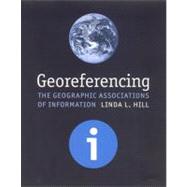
| Preface | p. iii |
| Acknowledgments | p. ix |
| Laying the Groundwork | p. 1 |
| Spatial Cognition and Information Systems | p. 21 |
| Georeferenced Information Object Types and Their Characteristics | p. 35 |
| Representation of Geospatial Location and Coverage | p. 63 |
| Gazetteers and Gazetteer Services | p. 91 |
| Georeferencing Elements in Metadata Standards | p. 155 |
| Geographic Information Retrieval | p. 185 |
| Future of Georeferencing | p. 215 |
| Glossary | p. 227 |
| References | p. 237 |
| Introduction to Index to Geographic Examples | p. 247 |
| Index to Geographic Examples | p. 249 |
| Index | p. 253 |
| Table of Contents provided by Publisher. All Rights Reserved. |
The New copy of this book will include any supplemental materials advertised. Please check the title of the book to determine if it should include any access cards, study guides, lab manuals, CDs, etc.
The Used, Rental and eBook copies of this book are not guaranteed to include any supplemental materials. Typically, only the book itself is included. This is true even if the title states it includes any access cards, study guides, lab manuals, CDs, etc.